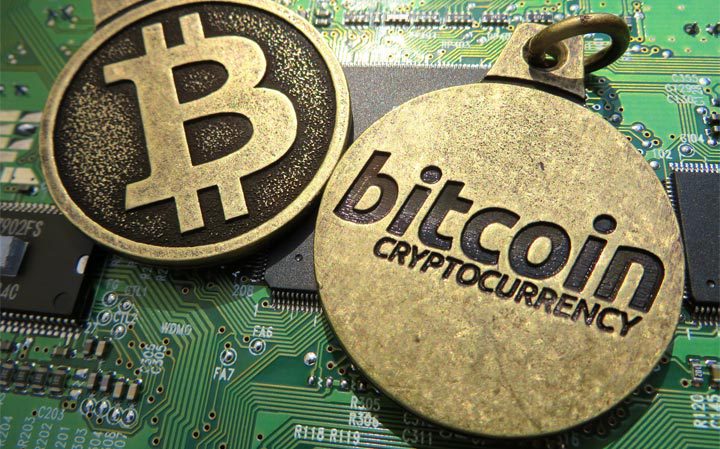Bitcoin 101: Understanding Bitcoin and Why It is So Compelling
Bitcoin sure has made headlines the last few months, much to the mystery for us who may only have one foot in the digital world (mainly those of us who are over 35 I imagine). The capital B refers to the payment network, the system behind the digital network, while the lower case word “bitcoin” refers to the actual unit of digital currency.
Two basic definitions will help the idea of Bitcoin:
First is understanding that cryptography is the science of hiding information so that unauthorized users cannot read it. This is important to prevent the payment system from being hacked and keeping all transactions anonymous to protect the buyer and seller of Bitcoins.
Second is understanding that an algorithm is made up of rules for solving computational problems on a computer. Input data is given that is then sorted according to certain specified rules that results in the output (problem solved) in the form of a computer program. Bitcoin uses both cryptography and algorithms as basic to creating this alternative currency.
The Bitcoin system was introduced in 2009 by an entity named Satoshi Nakamoto. No one knows whether Satoshi is a person, a group or a brilliant robot. Although alternative currencies are not a new idea, Satoshi took old ideas and integrated them with his own ingenious ones to create Bitcoin. With borderless, global digital money there is no government oversight or central database or bank to trace transactions.
How then do you prevent fraud?
Nakamoto solved these problems by first creating a public ledger known as a Block Chain that contains all the transactions made in bitcoins and is shared by all bitcoin users. This public accounting of all transactions validates all the transactions and eliminates counterfeiting. Thus everytime someone makes a purchase or exchanges bitcoins for another currency, that transaction is broadcast to anyone running open source Bitcoin software.
His second cryptographic and algorithmic solution to creating an alternative currency is what is referred to as “mining” bitcoins.
Bitcoin miners both maintain the public ledger, the Block Chain and are expanders of the virtual money supply. There are a total of 21 million possible bitcoins with about half presently in circulation (Nakamoto owns about 10% of the 12 million bitcoins now in circulation). Nakamoto’s algorithims only allows the bitcoin money supply to expand gradually. The maximum number of minable bitcoins worldwide is currently 25 every 10 minutes. So that is 150 bitcoins every hour. At this steady rate the last bitcoins will be mined in 2140 at the earliest.
So if you are a bitcoin miner you get paid to solve the complex computer math problems that are needed to record the payment transactions When you solve the problems you get paid in bitcoin. The more miners there are the more the bitcoins are distributed throughout the Bitcoin payment system so that more people are engaged in the payment system as opposed to other currencies that are created at the whim of a central bank and thus, unlike the Bitcoin system, is a currency that can be manipulated for political or economic reasons.
The more bitcoins that are created the more difficult the computational problems become so that only highly sophisticated computers can solve these problems. For that reason pooled mining has developed. That means groups of miners work pool their skills and get paid in bitcoin according to the problems they are able to solve.
What exactly are the problems that miners are getting paid to solve?
They are complex computing problems that have to do with cryptography, or hiding information from unauthorized users like hackers. The purpose of solving these cryptographic problems is to show that computer work in the form of hashes, nonces or long strings of numbers was done to get the answer that records the payment transactions, and to make sure hackers don’t break into the Bitcoin payment system.
This approach comes from a problem called the “Byzantine General’s Problem.” The idea is this: You have a general who is giving orders to “attack” or “retreat” and he sends those orders to his underlings. The underlings then relay his orders to the troops. Sometimes there are a small number of underlings who are traitors and will relay false orders (hackers). To prevent false orders, an order is not accepted unless it is received from multiple sources.
It is easy to understand why libertarians and other anti-authoritarian and idealistic individuals like the Bitcoin concept. There is also a generational aspect to Bitcoin’s ardent followers. People born from around 1976 on are at ease with computers. Those born around 1990 who are now teenagers only know a world that includes the Internet and digital devices. Most of Bitcoin’s followers are in their 20s and 30s and see Bitcoin as imbued with the values of their generation: anti-authoritarian including not highly valuing tradition, believing in free access to information and mutual sharing of resources and knowledge and working in groups at the same time respecting people’s right to be themselves.
Bitcoin’s payment system is free of government manipulation of currency because capital can move around freely, credit card fees are avoided, transactions are anonymous and there is global participation in payment system.
The fact that the worth of a Bitcoin started out as $13 and got as high as over $1,000 makes it a very volatile currency. If you bought something for $500 when one bitcoin was worth $500 and the next week it shot up to $1,000, buyer’s remorse that you essentially paid $1,000 for it might be hard to take. Many economists, including Paul Krugman, argue that Bitcoin is a speculative investment much like the tulip mania of the 17th century in Holland.
No matter what the case, only time will tell Bitcoin’s fate. It does seem that people’s emotions are driving them into Bitcoin, whether it is for a badge of libertarian freedom or greed. The behavioral economics term “overconfidence” fits here, and is what drove the .com exuberance of the mid and late 1990s.
The idea is that looking forward all people have a bias toward the positive and the reward of risk while the pitfalls fall into the background. Logic may tell you to stay away from such a speculative and unproven idea like Bitcoin, but typically emotion takes over because excitement feels good and no one wants to be left out of a “big win.” The bottom line for Bitcoin: “Pay your money and take your choice!”
Maggie Baker, Ph. D.
Psychologist – Financial Therapist
Author of Crazy About Money: “How Emotions Confuse Our Money Choices And What To Do About It”.

